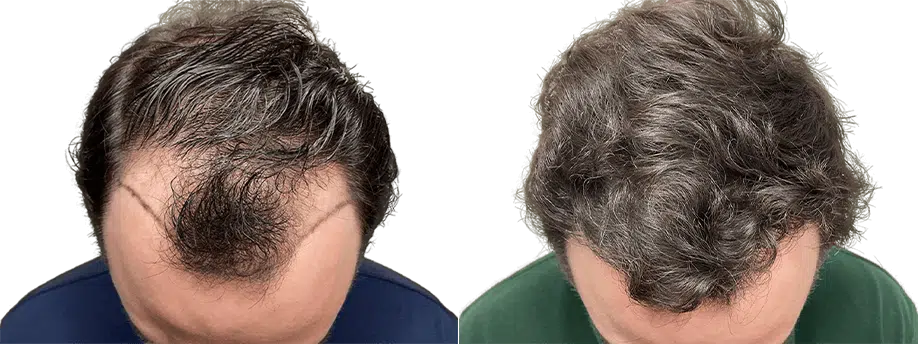The cost of non-surgical micrografting is very affordable, particularly if performed in tandem with a hair transplant or another non-surgical hair restoration procedure. Third party, 0% financing is available to those who qualify.
This hair restoration procedure is very quick and typically takes between one and two hours.
A general halo (ring) block is performed to block the respective areas of treatment with exception to the tissue that is being harvested to behind the ear. A small block is performed just to numb that area without embedding that tissue with lidocaine.
First, we clean and numb just behind the ear, a quarter inch into where the hair begins to grow. We inject a very small amount of lidocaine into the area without embedding the tissue and use the same harvesting tool that we use for an FUE hair transplant to remove 6-12 healthy hair follicles. This could eventually expand to 40-50 follicular units.
Those hair follicles are mixed with a solution such as saline and then placed into a hi-tech centrifugal system with a series of microsized blades. The centrifugal system mechanically disaggregates the healthy hair organ, releasing the dermal papillae's functional matrix. This matrix contains the healthy components that the organ uses to repair the organ, cycle hair growth, and signaling factors that are used by the dermal papilla to migrate various healing factors that are used during its daily repair and functions.
Once the mechanical process is complete, the saline has already been mixed with the dermal papillae's matrix. It's drawn into a syringe and injected into the respective areas of concern.
This hair restoration procedure follows similar preoperative preparation to an FUE or FUT hair transplants, but most importantly, you must avoid things such as aspirin, NSAIDs, alcohol, and steroids. All of these impact the efficacy of this hair restoration procedure.
























